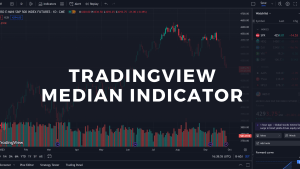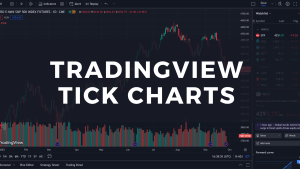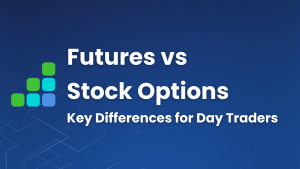This article on 10 Things to Get Right Before You Start Trading Futures is the opinion of Optimus Futures.
Futures trading is exciting. And with the introduction of multiple new micro futures products, it’s become more accessible to retail traders than ever before.
Now, before you dive into trading, there are a few things you need to get right.
Some are obvious, like picking out your strategy and risk management. But, if you don’t understand tick size or leverage, you can quickly find yourself overextended.
And then there are less obvious considerations like expiration and settlement procedures.
That’s why we’ve compiled 10 things you should get right before you start trading futures.
1. Picking Out Your Futures Trading Strategy
There are probably as many trading strategies as there are stars in the sky.
Before you start trading futures, you need to pick the one best suited for you.
Start by choosing between day trading futures and swing trading futures strategies.
Day trading futures typically involves capitalizing on small movements in the futures market multiple times a day. You may only find yourself in a position for a few seconds or a few minutes.
Swing trading futures often means you hold smaller positions for larger movements that can last hours or even days.
This distinction is critical since the margin requirements for day trading and overnight are very different.
2. Leverage
Stock traders may be familiar with leverage and margin accounts. However, futures products take this a step further.
Take the micro E-Mini S&P 500 Futures. This product controls a notional value of $5 x S&P 500 Index, or roughly $22,500.
Futures day trading margins for this micro futures product only require $50 per contract. Overnight margins require $1,188.
That means if you start trading futures with micro E-Mini S&P 500, you get 450x leverage for day trading and almost 19x leverage overnight.
(CME Group changes margins periodically. Please inquire with us what is the overnight and day rates).
This capital efficiency helps traders and investors, whether retail or institutions, hedge their portfolios or speculate outright without tying up enormous amounts of capital.
However, it also means you can lose more money than you hold in your account should the trade go against you.
And while we’ve talked about the micro E-Mini S&P 500 Futures, the standard E-Mini S&P 500 Futures contract has 10x more leverage.
In fact, many futures products contain standard and micro-sized contracts. So be sure to research each one and understand the margin requirements and value of each tick.
3. Futures Risk Management
Before you start trading futures, you need a risk management strategy.
That starts with understanding the relationship of risk and reward for each trade as well as volatility.
For example. Let’s say I want to trade the micro E-Mini S&P 500 Futures. My trade setup captures 5 points or 20 ticks per win with equal risk.
That’s a risk to reward ratio of 1:1.
Since each tick in the micro E-Mini S&P 500 Futures is worth $1.25 per contract, my potential profit and loss are $25 per contract. Fees and commissions for this product run about $3.00 round trip.
That might make sense for an account that has $500 to $5,000 in it when you trade only a handful of micro contracts.
But an account with $50,000 might want to go with one standard E-Mini S&P 500 Futures contract that is the equivalent of 10 micro contracts to lower overall fees and commissions.
Choose the contract size and amount that fits with your strategy and account size that gives you the flexibility to absorb typical volatility.
4. Creating Trade Review Process
Traders don’t get everything right out of the gate. Plus, markets and conditions can and do change.
That’s why a trade review process is so critical.
Everyone needs a regularly scheduled review process to ensure:
- Strategies are performing as expected
- You are executing orders correctly
- Opportunities aren’t missed
- Risks are identified
- Adherence to the trading plan
But they should cover all the information noted above.
One of the best ways to do that is using a trading journal.
Trade journals give you unbiased, honest assessments of your trading through basic data collection and compilation.
5. Deciding When and What to Trade
Want to trade the micro E-Mini S&P 500 futures?
You probably want to trade during the main session which goes from 9:30 a.m. to 4:00 p.m. EST. Otherwise, you’ll be trading during times with lighter volume.
Crude oil futures are the most direct way to trade the spot price of crude oil. However, if you didn’t know that oil inventories are released every Wednesday at 10:30 a.m EST, you could get caught in a period of excess volatility.
Before you start trading futures, you need to decide what products you want to trade and when.
Some products experience more volatility during the U.S. markets, while others see the largest moves during the European markets.
Pick your products and learn about them, including:
- When they trade, including the main session
- Liquidity
- Events and reports that tend to cause excess volatility
- Value of each tick
- Margin requirements
- Settlement procedures and rolling
6. Understanding Expiration and Settlement
Back in 2020, crude oil futures went negative during the depths of the pandemic.
A large ETF that tracked the price of crude oil did so using crude oil futures.
You may not know that regular crude oil futures have a physical settlement as opposed to cash settlement.
Cash settlements are simple because they true up the difference between the price you bought or sold the futures contract and the price at expiration. This is how index futures trade.
Physical settlements require the owner of the futures contract to take physical delivery of the asset under certain conditions.
Now, back in the summer of 2020, the storage facility in Cushing Oklahamoa was full. Traders that took physical delivery had nowhere to put it.
So, the ETF needed to close out all its long crude oil futures contracts since they couldn’t take physical delivery.
That mass liquidation forced crude oil futures to go briefly negative.
Don’t let this happen to you.
Make sure you understand how expiration and settlement features work on a product before you start trading futures. This means looking at how, when, and if you need to roll.
7. Emotional Control
A trader’s worst enemy is him or herself.
Markets constantly play with our emotions. And a string of bad outcomes can send a trader quickly spiraling out of control.
No one gets 100% control of their emotions.
What they do is learn to recognize where and when emotions are most likely to impact their decision-making.
Then, they create plans to prepare themselves for those moments and lessen the impact of their feelings.
For example. A trader might find that their strategy works when they buy or sell in a given range. However, that leaves a lot of room for emotions to creep in.
Instead, that same trader can make a decision to calculate a specific price, random or calculated, that removes the emotions from the equation.
8. Choosing The Right Platform
You can’t start trading futures without a platform.
While many of them may look the same, there are plenty of differences out there.
For example. One of the biggest differences between platforms is whether they’re run off your desktop or online.
You also want a platform that includes all the indicators and charting tools you need to execute your strategy effectively.
One of the most important features traders forget about is navigability. When you trade, whether its quick day trades or longer-term swing trades, it shouldn’t be a struggle to find, analyze and execute your orders.
You want a platform that’s easy to understand and maneuver so you can quickly enter orders when needed, manage your positions, and analyze markets.
9. Completing a Technology Audit
Along with platform selection, every trader needs to complete a technology audit before they start trading futures.
A technology audit identifies everything from system requirements and data to indicators and programmability you need to trade.
Even if you aren’t heavy into the use of indicators or automation, a technology audit can help you de-clutter your screens and improve performance.
10. Selecting a Futures Broker and Funding Your Account
Naturally, every trader needs to select a broker and fund their account before they start trading futures.
When you search out a broker, commissions are important. But they’re not the only variable to consider.
You want to consider many of the following items as well:
- Customer service
- Speed of account setup
- Funding and withdrawal ease, options, and availability
- Margins
- Reputation
- Accreditation
See What Optimus Futures Can Do For You
Optimus Futures caters to new and experienced traders alike.
Our flagship Optimus Flow platform includes unique tools including Footprint charting, automated trade journals, real-time news feeds, and hundreds of indicators, all right out of the box.
And you can get started trading futures in a matter of hours by opening an account using our easy application process.
Disclaimer: There is a substantial risk of loss in futures trading. Past performance is not indicative of future results.
















